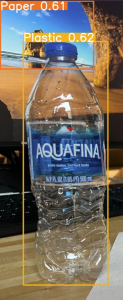Potential Risks and Risk Management
The most significant risks that we anticipate for this project are:
Servo Load Rating
In our project proposal, we indicated that we expect our system to be able to accurately classify 25’’ diameter, 10-pound objects. Given these conditions, we are uncertain if simple servos will be able to handle this load. In addition to this, timing synchronization will be pivotal for our product to work as expected. To address these risks, we have identified possible alternatives.
- Use a servo rated for higher loads (7kg, 25kg, etc.)
- Implement an additional stabilizer for servo actuation in the conveyor belt design
Mechanical Failure
The conveyor belt breaks or stalls, thus increasing the latency of the system. To address these issues, we have outlined strict prototyping requirements for our initial stages.
- Stress Test System Design
- Place 6 objects of a maximum of 10 pounds onto the belt
- Allow the conveyor system to run at 0.68mph (based on proposal) and check functionality
Overall Design Changes
No significant changes were made to our design. This may change as we solidify our system architecture. We have upcoming goals of completing the CAD Model of the conveyor belt by 09/02/2025, and the entire system design architecture by 11/02/2025.
Schedule
Currently, there are no major updates to our schedule, however, we have updated it to indicate our progress on ongoing tasks.
Schedule – Gantt Chart
Progress Update
With a spare NVIDIA Jetson Nano, our team was able to boot up the Jetson successfully. We ran into some issues initially with regard to the system getting overloaded every time we plugged in a USB, however, we were able to quickly get past this by using a 5V 3+A power brick. We were also able to connect the Jetson to WiFi using this Spark Fun guide. For our object detection mechanism, we decided that we would be using a YOLO model, and so we decided to test whether the Jetson could successfully launch an existing program.

Our Jetson Nano successfully running a YOLO Model
In addition to this, we also worked on our parts list, cross-listing items that we needed with the CMU Inventory, and also considering tradeoffs with components that are currently in the inventory vs. other unlisted suppliers.


